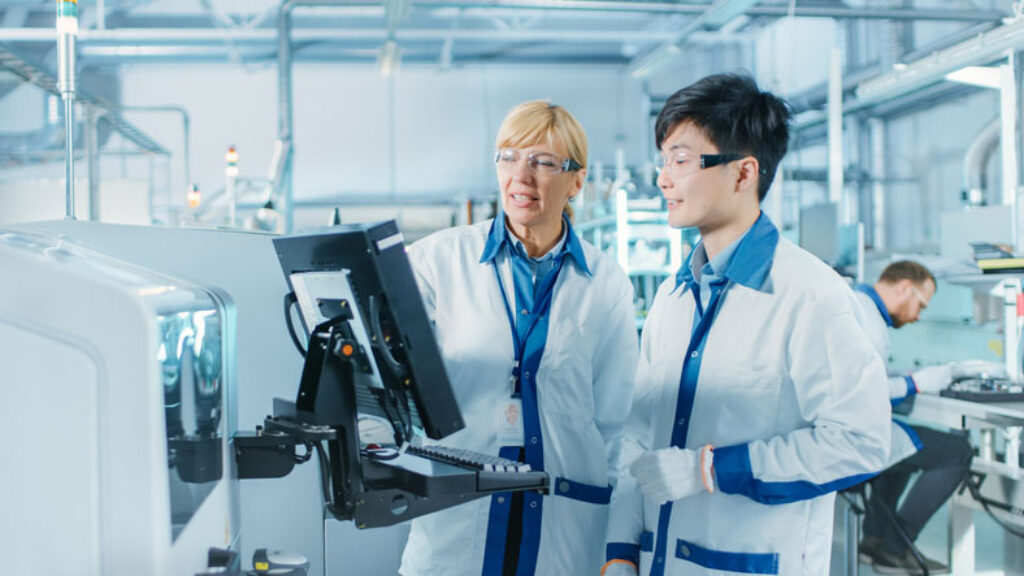
Table of Contents
Researching Potential Manufacturers

Source: healthadministrationdegrees.com
When embarking on the journey of Asia medical device sourcing, it’s crucial to identify potential manufacturers that meet your requirements. Here are some ways to research medical device manufacturers and gather vital information about their capabilities and reliability.
Online Searches
The internet is a valuable resource for finding manufacturers. Start by using search engines to locate potential candidates. While you may come across several companies, it’s essential to filter your results by considering factors such as certifications, reputation, and manufacturing capabilities. Additionally, utilize online directories and databases specifically geared towards the medical device industry to find more targeted results.
Industry Publications and Reports
To gain a deeper understanding of medical device manufacturing in Asia, consult industry publications and reports. These resources often provide insights into key players in the market, industry trends, and emerging companies. By analyzing this information, you can identify potential manufacturers with a strong presence in the industry and a track record of success.
Trade Shows and Industry Events
Attending medical device trade shows and industry events in Asia offers the opportunity to meet manufacturers face-to-face. These events also provide a platform for networking and establishing contacts within the industry. When attending trade shows, make a point to visit the booths of manufacturers that align with your needs and engage in meaningful conversations to assess their suitability as potential partners.
Evaluating Manufacturer Reliability

Source: elgrandegroup.com
Once you have identified potential manufacturers, it’s essential to evaluate their reliability. Several factors contribute to a manufacturer’s credibility, including regulatory compliance, company reputation, and financial stability.
Regulatory Compliance and Certifications
To ensure you partner with a reliable manufacturer, verify their compliance with international standards such as ISO, CE, and FDA requirements. A manufacturer should also have a robust quality management system in place, such as ISO 13485 certification. Check their certifications and compliance records to confirm their commitment to quality and adherence to regulatory standards.
Company Reputation and Reviews
A manufacturer’s reputation speaks volumes about its reliability. If possible, assess customer testimonials and case studies to understand their performance and customer satisfaction levels. Industry forums and social media can provide additional insights into the manufacturer’s reputation. Consider factors such as years in business and market position when evaluating a manufacturer’s credibility.
Financial Stability and Transparency
A financially stable manufacturer is more likely to be a reliable partner. Assess company financial reports to gauge their stability and long-term viability. Transparency in operations and management is also a crucial factor in determining reliability. Investigate potential legal disputes or issues that could impact the manufacturer’s performance or reputation.
Assessing Manufacturing Capabilities

Source: meddeviceonline.com
In addition to evaluating a manufacturer’s reliability, it’s important to assess their manufacturing capabilities. This includes factors such as technical expertise, scalability, and quality control.
Technical Expertise and Innovation
The medical device industry is constantly evolving, and manufacturers need to keep pace with technological advancements. Inquire about a manufacturer’s research and development capabilities, product portfolio, and adoption of new technologies and techniques. A manufacturer with strong technical expertise and a commitment to innovation is more likely to produce high-quality devices.
Scalability and Production Capacity
Assess a manufacturer’s production facilities and equipment to determine their capacity to scale operations to meet your requirements. Analyze lead times and delivery capabilities to ensure they align with your business needs. A manufacturer with the ability to scale production and maintain timely deliveries is crucial for the success of your medical device sourcing in Asia.
Quality Control and Testing
This is a critical aspect of medical device manufacturing. Ensure that the manufacturer has robust medical device quality control processes in place, including rigorous product testing methods and procedures. Traceability and accountability in production are also essential factors to consider, as they contribute to the overall reliability of the manufacturer.
Building Strong Partnerships

Source: health.gov.au
Once you have identified a reliable manufacturer, the next step is to build a strong partnership. Effective communication, customization, and long-term commitment are key factors in establishing successful collaborations. Relationships in Asia are key to business success, and face-to-face meetings are frequently needed.
Effective Communication and Support
Clear and responsive communication is critical when partnering with a manufacturer, particularly when working with companies in Asia. Evaluate the manufacturer’s communication style, availability of technical support, and customer service. Consider potential language and cultural barriers and ensure that both parties can effectively communicate to avoid misunderstandings and ensure smooth collaboration.
Customization and Collaboration
Asian device manufacturers should be flexible in meeting your unique product requirements and willing to collaborate on product development. Assess the manufacturer’s ability to adapt to your evolving needs and their willingness to work closely with your team to achieve desired results. A manufacturer that is adaptable and collaborative is more likely to be a valuable partner in the long run.
Long-term Commitment and Trust
A successful partnership requires dedication to customer success, trust, and long-term commitment. Evaluate the Asian medical device manufacturer’s dedication to your business by assessing their transparency and open communication. Establishing trust is vital for a successful partnership, as it promotes a strong working relationship and ensures that both parties work together to achieve common goals.
Finding reliable medical device manufacturers in Asia is a process that requires thorough research, evaluation, and patience. By following the steps outlined in this comprehensive guide, you can navigate the complexities of Asia medical device sourcing and identify a manufacturer that aligns with your business needs and goals. Building strong partnerships with reliable manufacturers ensures the success of your medical device sourcing endeavors in Asia and contribute to the growth of your business.
Factors to Consider for Medical Device Sourcing in Asia

Source: nsmedicaldevices.com
The medical device industry in Asia has experienced tremendous growth in recent years, driven by an aging population, increased healthcare spending, and rapid technological advancements. As a result, medical device sourcing in Asia has become an attractive option for many companies seeking cost-effective solutions and access to cutting-edge technologies. However, selecting the right supplier can be a daunting task. This blog post aims to provide a comprehensive guide on the key factors to consider when sourcing medical devices in Asia, ensuring you make well-informed decisions for your business.
Quality and Compliance
Regulatory Requirements
Navigating the regulatory landscape in Asia can be challenging, as each country has its own set of rules and standards for medical devices. These regulations often align with international standards, such as those set by the FDA and European Union. When sourcing medical devices in Asia, it is crucial to ensure that your chosen supplier complies with both local and international regulations to avoid potential legal issues and ensure the safety of your medical device products.
Quality Management Systems (QMS)
A robust QMS is the backbone of any reliable medical device manufacturer. The International Organization for Standardization (ISO) has developed ISO 13485, a globally recognized standard for medical device quality management systems. A supplier with ISO 13485 certification demonstrates their commitment to quality and adherence to industry best practices. When evaluating potential suppliers, prioritize those with a strong QMS in place and ISO 13485 certification. Device manufacturers also need to meet GMP.
Product Testing and Validation
To ensure the safety and efficacy of your medical devices, thorough product testing and validation are essential. Seek out suppliers that invest in extensive testing and have obtained third-party certifications, such as CE Marking or FDA approval, as these serve as an indication of the product’s compliance with relevant standards. Partnering with a supplier that prioritizes testing and validation reduces the risk of product recalls and enhances your reputation in the market.
Supply Chain and Logistics
Supplier Reliability
One of the most crucial aspects of Asia medical device sourcing is selecting a reliable supplier. Assess the supplier’s track record by reviewing their customer testimonials, case studies, and years in business. Additionally, evaluate their financial stability and ability to scale their operations to meet your growing needs. A reliable supplier ensures consistent product quality and timely deliveries, helping you maintain a strong competitive advantage in the market.
Geographic Location
The geographic location of your supplier can significantly impact lead times and transportation costs. When sourcing medical devices in Asia, consider suppliers located near key raw materials and manufacturing hubs. This not only reduces transportation costs but also ensures a stable supply of raw materials and faster production times.
Shipping and Delivery
Customs regulations and potential delays are critical factors to consider when shipping medical devices across borders. Familiarize yourself with the customs requirements of the Asian country and ensure that your supplier can provide the necessary documentation to avoid delays. Additionally, make sure the supplier uses proper packaging and handling techniques to prevent damage to your medical devices or medical device components during transit.
Intellectual Property (IP) Protection
Understanding IP Laws in Asia
IP protection is a major concern for many companies sourcing medical devices in Asia. The IP laws in Asia vary significantly from one country to another, making it essential to be well-versed in local regulations. Working with a knowledgeable legal counsel or IP consultant can help you navigate this complex landscape and protect your valuable intellectual property.
Selecting a Supplier with Strong IP Protection Measures
Choose a supplier that takes IP protection seriously and has robust measures in place to safeguard your sensitive information. Insist on signing non-disclosure agreements (NDAs) with your supplier, and ensure they have proper IP management and monitoring systems in place. A supplier committed to protecting your IP assets reduces the risk of infringement and helps maintain your competitive edge.
Cost and Pricing
Assessing Total Cost of Ownership (TCO)
When considering Asia medical device sourcing, it’s important to look beyond the upfront costs and assess the total cost of ownership (TCO). TCO includes all costs associated with sourcing and procurement, such as transportation, import duties, warehousing, and quality control. Calculating TCO enables you to make accurate comparisons between suppliers and identify the most cost-effective option for your business.
Price Negotiation
Cultural differences can play a significant role in price negotiations with Asian suppliers. Understanding these nuances can help you secure favorable terms and build lasting relationships with your partners. Educate yourself on local negotiation practices and be prepared to adapt your approach accordingly. Showing respect for your supplier’s culture and maintaining open lines of communication can lead to successful negotiations.
Ethical and Sustainability Considerations

Source: ul.com
Labor Practices and Working Conditions
Ethical labor practices and positive working conditions are important factors to consider when sourcing medical devices in Asia. Ensure that your chosen supplier adheres to ethical labor standards and demonstrates a commitment to employee welfare. This not only helps you maintain a positive brand image but also reduces the risk of supply chain disruptions caused by labor disputes or regulatory crackdowns.
Environmental Sustainability
As concerns about the environment continue to grow, selecting a supplier with a strong sustainability policy has become increasingly important. Look for Asian suppliers that implement eco-friendly manufacturing processes and are committed to reducing their environmental impact. Partnering with a supplier that prioritizes sustainability can enhance your brand reputation and contribute to your own corporate social responsibility initiatives.
Due diligence is essential when sourcing medical devices in Asia. By carefully considering factors such as quality and compliance, supply chain and logistics, intellectual property protection, cost and pricing, and ethical and sustainability considerations, you can make well-informed decisions and select the right supplier for your needs. If needed, seek professional assistance from industry experts or consultants to navigate the complexities of the Asian medical device market and ensure your success in this dynamic and rapidly growing region.








